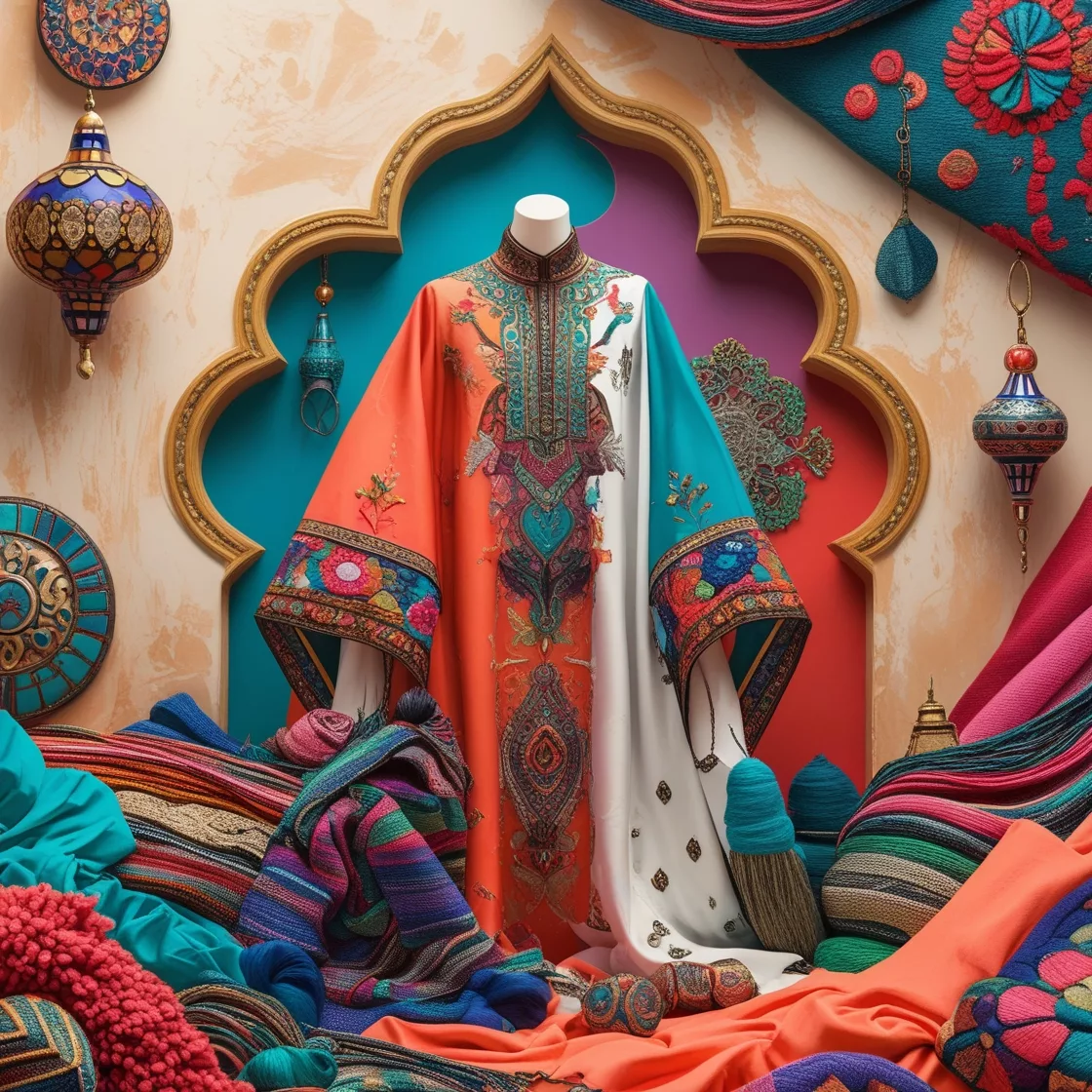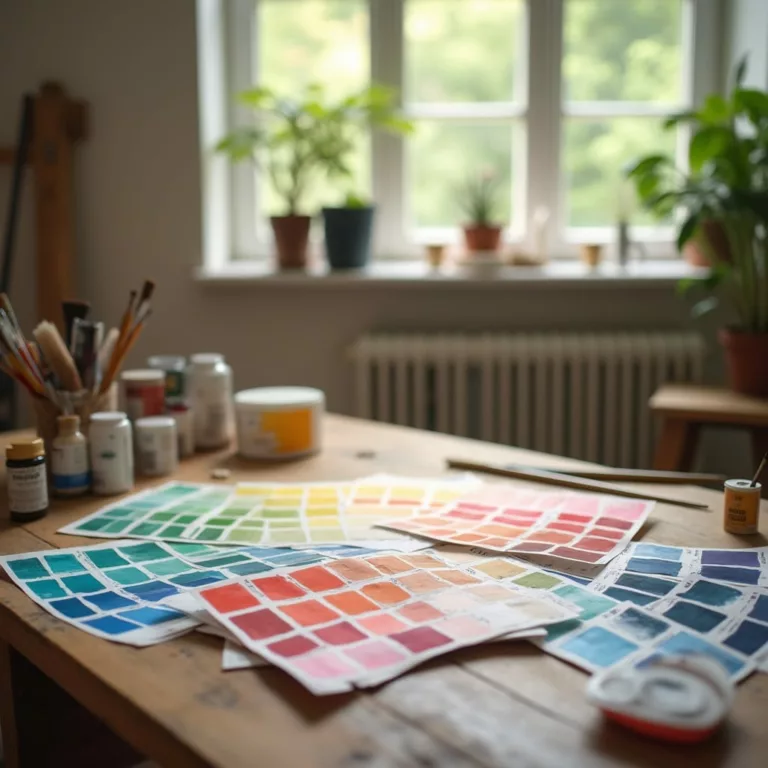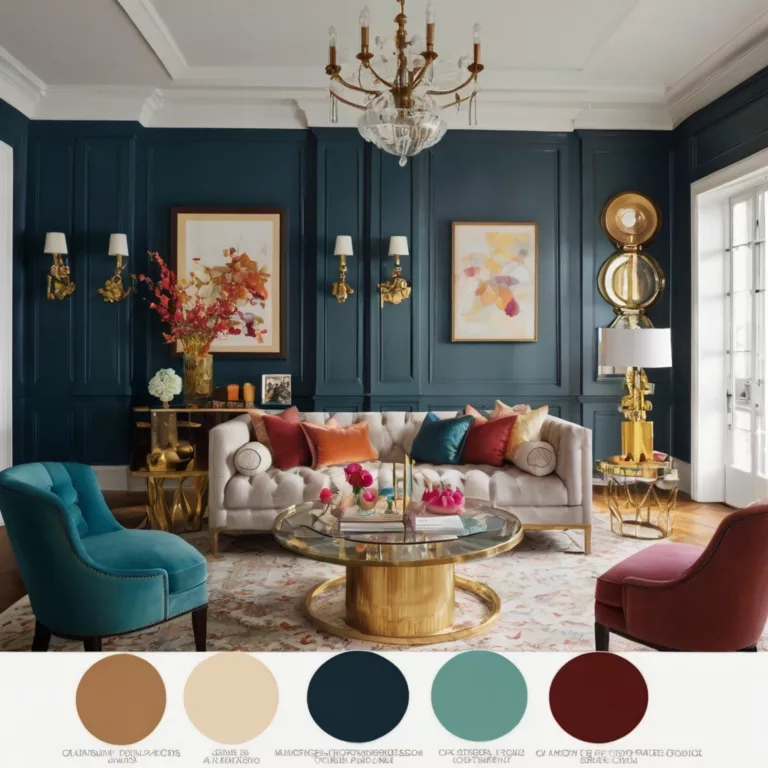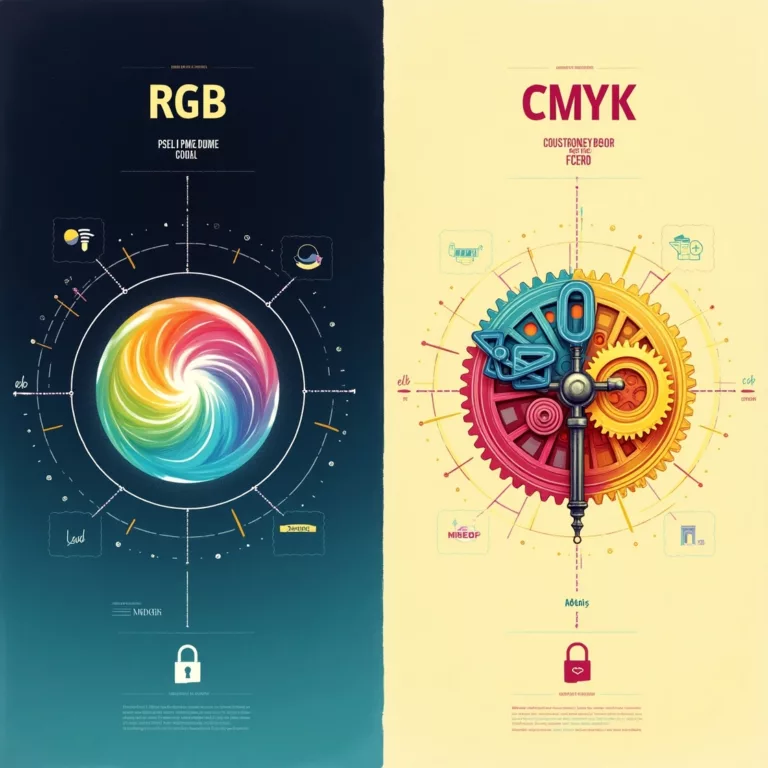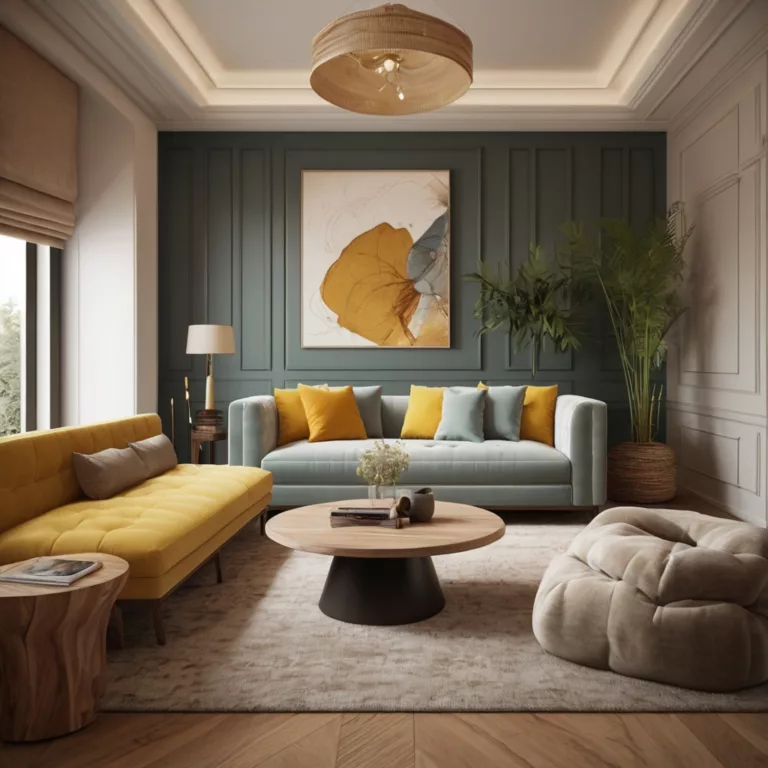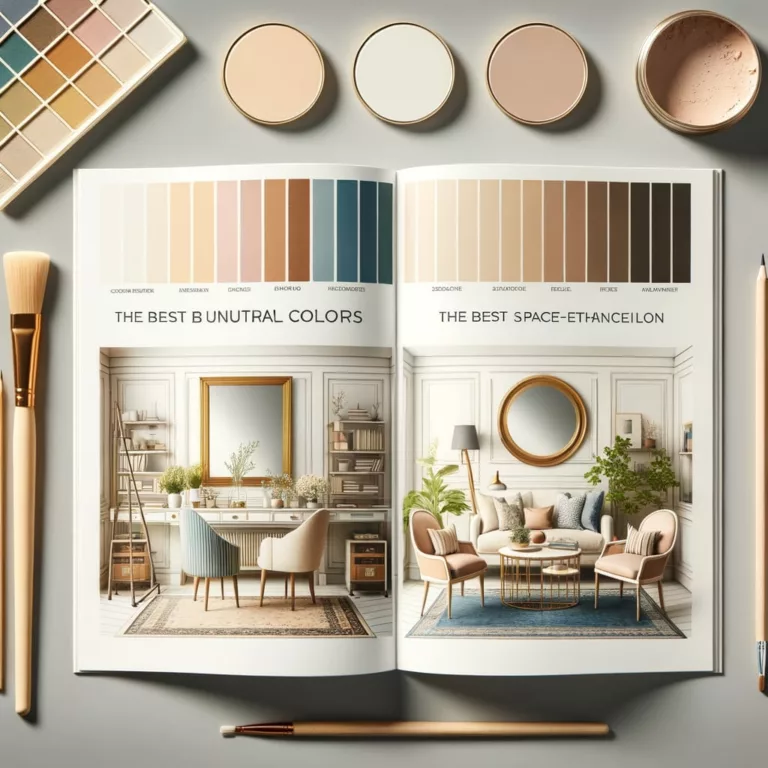Colors in Fashion & Branding: A Comprehensive Analysis
Introduction
1.Color is one of the most powerful and immediate forms of non-verbal communication in both fashion and branding. The strategic use of color can elicit specific emotional responses, convey complex messages without words, and create lasting impressions that influence consumer behavior and personal perception. This comprehensive analysis explores the multifaceted role of colors in fashion and branding, examining how individuals can select colors that enhance their appearance, how businesses leverage color psychology to build brand identity, and the sophisticated techniques companies employ to attract and retain customers through chromatic strategy.
Part 1: How to Choose the Right Colors for Your Skin Tone
Understanding Skin Undertones
The foundation of personal color selection lies in understanding one’s skin undertone, which remains constant regardless of superficial skin color changes due to tanning or environmental factors. Skin undertones generally fall into three categories:
Warm Undertones
- Characterized by golden, yellow, or peachy hues beneath the surface
- Veins appear green when viewed through the skin
- Gold jewelry typically enhances the complexion
- Natural hair colors often have golden, red, or amber highlights
- Skin tans easily and rarely burns
Cool Undertones
- Characterized by pink, red, or bluish hues beneath the surface
- Veins appear blue or purple when viewed through the skin
- Silver jewelry typically complements the complexion
- Natural hair colors often have ash or cooler tones
- Skin burns easily and tans with difficulty
Neutral Undertones
- Balanced mix of warm and cool characteristics
- Veins appear both blue and green
- Both gold and silver jewelry look flattering
- Can typically wear a wider range of colors successfully
- Skin may tan or burn depending on sun exposure intensity
Color Analysis Systems
Several systematic approaches have been developed to help individuals identify their optimal color palette:
Seasonal Color Analysis
The traditional four-season approach categorizes individuals into:
- Winter: Cool, deep, and clear coloring (high contrast)
- Spring: Warm, clear, and bright coloring (medium contrast)
- Summer: Cool, soft, and muted coloring (low contrast)
- Autumn: Warm, deep, and muted coloring (medium contrast)
Expanded Seasonal Analysis
More nuanced systems further divide these into subcategories (e.g., Soft Summer, Clear Winter) for greater precision.
Color Dimensions Analysis
Modern approaches often analyze color compatibility across three dimensions:
- Hue: The actual color family (red, blue, etc.)
- Value: The lightness or darkness of a color
- Chroma: The intensity or saturation of a color
Optimal Color Selections by Undertone
For Warm Undertones
- Earth tones: terracotta, olive green, warm brown, cream
- Rich colors: coral, golden yellow, peach, amber
- Muted reds: brick, tomato, rust
- Avoid: harsh black, cool blues, fuchsia, purples with blue undertones
For Cool Undertones
- Jewel tones: emerald, sapphire, ruby, amethyst
- Clear colors: pure white, navy, cool gray, true blue
- Cool reds: cranberry, raspberry, burgundy
- Avoid: orange, mustard yellow, olive green, camel
For Neutral Undertones
- Mid-tone colors: neither extremely bright nor dark
- Softened colors: jade green, buff, dusty rose, teal
- Universal colors: true red, medium blue, soft white
- Avoid: extremely bright or neon colors that can overpower
Advanced Considerations
Contrast Level
Beyond undertone, personal contrast level (the difference between hair, skin, and eye color) influences optimal color choices:
- High contrast individuals (e.g., pale skin with dark hair) typically look best in clear, distinct colors with strong differentiation
- Low contrast individuals (e.g., blonde hair with fair skin) generally benefit from softer, more blended color palettes
Seasonal Adjustments
Many people find their optimal colors shift slightly with seasonal changes:
- Summer tanning may allow warmer-toned individuals to wear brighter colors
- Winter pallor may require cool-toned individuals to adjust to deeper jewel tones
Aging Considerations
As people age, skin commonly loses pigment and contrast, often necessitating:
- Softening of previously bold color choices
- Avoidance of extremely dark colors that can emphasize lines and shadows
- Strategic use of brightening colors near the face
Part II: The Psychology of Colors in Branding & Logos
The Science of Color Psychology
Color psychology operates at the intersection of psychology, cultural studies, and visual design. Research consistently demonstrates that colors influence:
Physiological Responses
- Red increases heart rate and stimulates appetite
- Blue can lower blood pressure and create sensations of calm
- Bright yellow can initially increase mental activity but may cause visual fatigue with prolonged exposure
Cognitive Processing
- Colors can improve comprehension by up to 73% when used strategically
- Color-coded information can improve recall by up to 60%
- Brand recognition increases by up to 80% with consistent color usage
Emotional Associations
- Colors trigger emotional responses through both biological predisposition and cultural conditioning
- These responses occur within 90 seconds of visual exposure
- Between 62-90% of initial product assessment is based solely on color
Color Meanings in Branding Contexts
Red
- Psychological impact: Excitement, passion, urgency, danger
- Branding applications: Creates appetite stimulation, impulse purchasing, attention-grabbing elements
- Notable examples: Coca-Cola (vitality), Netflix (excitement), Target (energy), CNN (urgency)
- Cultural variations: Symbolizes luck in China, mourning in South Africa, communism in historically communist countries
Blue
- Psychological impact: Trust, reliability, tranquility, professionalism
- Branding applications: Financial institutions, technology companies, health care, professional services
- Notable examples: Facebook (trust), IBM (reliability), Visa (security), American Express (prestige)
- Cultural variations: Symbolizes immortality in China, divinity in Middle Eastern countries, mourning in Korea
Yellow
- Psychological impact: Optimism, clarity, warmth, caution
- Branding applications: Attention-getting, affordable products, youthful brands
- Notable examples: McDonald’s (happiness), IKEA (optimism), National Geographic (intellect), Snapchat (playfulness)
- Cultural variations: Symbolizes courage in Japan, mourning in Egypt, spirituality in India
Green
- Psychological impact: Growth, health, tranquility, environment
- Branding applications: Environmental organizations, financial services, food and wellness products
- Notable examples: Whole Foods (natural), Starbucks (ethical sourcing), BP (environmental responsibility), Animal Planet (nature)
- Cultural variations: Symbolizes fertility in many cultures, sacred in Islam, death in South America
Purple
- Psychological impact: Luxury, creativity, wisdom, spirituality
- Branding applications: Premium products, beauty brands, creative services
- Notable examples: Cadbury (indulgence), Hallmark (sentimentality), Yahoo (imagination), Twitch (creativity)
- Cultural variations: Symbolizes nobility in European traditions, mourning in Thailand, virtue in Japan
Orange
- Psychological impact: Friendliness, enthusiasm, affordability, energy
- Branding applications: Budget brands, entertainment, food products
- Notable examples: Nickelodeon (playfulness), Fanta (fun), Amazon (friendly service), Harley-Davidson (enthusiasm)
- Cultural variations: Symbolizes love and happiness in Japan, mourning in Middle Eastern countries
Black
- Psychological impact: Sophistication, authority, luxury, strength
- Branding applications: Luxury products, technology, sophisticated services
- Notable examples: Nike (power), Chanel (elegance), The New York Times (authority), Adidas (performance)
- Cultural variations: Symbolizes mourning in Western cultures, wealth in Middle Eastern countries
White
- Psychological impact: Simplicity, purity, minimalism, cleanliness
- Branding applications: Health products, technology, weddings, minimalist brands
- Notable examples: Apple (simplicity), Nike (minimalism), wedding industry (purity), medical brands (sterility)
- Cultural variations: Symbolizes mourning in Eastern cultures, purity in Western traditions
Color Harmony in Brand Identity
Successful brand identities rarely rely on single colors but instead employ strategic color combinations:
Monochromatic Schemes
- Different shades of the same color
- Creates unified, sophisticated appearance
- Examples: Facebook (multiple blues), Starbucks (various greens)
Complementary Schemes
- Colors opposite on the color wheel
- Creates visual tension and maximum contrast
- Examples: FedEx (purple and orange), Firefox (orange and blue)
Analogous Schemes
- Colors adjacent on the color wheel
- Creates harmonious, cohesive appearance
- Examples: BP (green and yellow), McDonald’s (red and yellow)
Triadic Schemes
- Three colors equally spaced on the color wheel
- Creates balanced, vibrant appearance
- Examples: Burger King (red, yellow, blue), Microsoft (red, green, blue, yellow)
The Evolution of Color Trends in Branding
Historical Progression
- 1950s: Pastel colors reflecting post-war optimism
- 1960s-70s: Psychedelic colors reflecting cultural revolution
- 1980s: Neon colors and high contrast reflecting consumerism
- 1990s: Grunge-inspired subdued palettes and earth tones
- 2000s: Technological minimalism with blues and grays
- 2010s: Millennial pink and neo-mint reflecting generational identity
- 2020s: Sustainability-focused earth tones and digital-native gradients
Contemporary Color Trends
- Sustainability signaling: Natural greens, blues, and earth tones indicating environmental consciousness
- Digital-first gradients: Multi-colored gradients optimized for screen viewing
- Nostalgic palettes: Retro color schemes evoking specific decades
- Inclusive color design: Considering color blindness and accessibility in palette development
Part III: How Businesses Use Colors to Attract Customers
Strategic Color Application Across Touchpoints
Retail Environment Design
- Fast-food restaurants: Red and yellow stimulate appetite and create urgency (McDonald’s, Burger King)
- Luxury retail: Neutral backgrounds with strategic accent colors create sophistication (Tiffany’s blue, Hermès orange)
- Discount retailers: Bright colors signal value and affordability (Walmart blue, Target red)
- Spa/wellness spaces: Blues and greens promote relaxation and healing
Website and Digital Interface Design
- Financial services: Blues build trust and security (PayPal, American Express)
- Health/wellness: Greens signal growth and vitality (Whole Foods, Mint)
- Technology: Clean whites with accent colors suggest innovation (Apple, Google)
- Entertainment: Rich, saturated colors create immersive experiences (Netflix, Spotify)
Product Packaging Design
- Color-coded product variants: Different flavors or formulations distinguished by color
- Category conventions: Organic products in green packaging, premium products in black/gold
- Shelf impact: Distinctive colors that stand out from competitors
- Cultural adaptation: Package colors adjusted for different market sensitivities
Marketing Communications
- Seasonal color shifts: Holiday-specific color schemes (Christmas red/green, Halloween orange/black)
- Gender targeting: Traditional gender-specific colors for targeted products
- Demographic focus: Bright colors for youth markets, sophisticated palettes for luxury demographics
- Call-to-action buttons: Strong, contrasting colors to increase conversion rates
Industry-Specific Color Strategies
Food and Beverage Industry
- Red and yellow stimulate appetite and create urgency
- Green signals health, organic, and natural ingredients
- Brown suggests richness and comfort (chocolate, coffee)
- Blue is rarely used except for snacks as it suppresses appetite
Financial Services
- Blue dominates to signal trustworthiness and stability
- Green suggests growth and prosperity
- Strategic use of gold/silver suggests premium services
- Red used sparingly to highlight urgent matters or special offers
Healthcare Sector
- Blue creates calm and inspires confidence
- Green suggests healing and wellness
- White communicates sterility and cleanliness
- Pastels create soothing environments in pediatric settings
Technology Industry
- Blue suggests reliability and user-friendliness
- Black communicates sophistication and power
- White suggests simplicity and ease of use
- Accent colors differentiate products within comprehensive ecosystems
Advanced Color Marketing Techniques
Color Forecasting
Companies employ specialized color forecasting services (Pantone Color Institute, Color Marketing Group) to:
- Predict consumer color preferences 12-36 months in advance
- Align product development with emerging color trends
- Ensure cultural relevance in global markets
A/B Testing for Color Optimization
Digital marketers extensively test color variations to determine:
- Optimal button colors for conversion rate optimization
- Most engaging background colors for extended site visits
- Most effective color combinations for email marketing open rates
Neurological Color Research
Advanced companies utilize eye-tracking and neurological research to:
- Map brain activity in response to specific color stimuli
- Determine optimal color placement for maximum attention
- Measure unconscious color preferences among target demographics
Cross-Cultural Color Strategy
Global brands develop sophisticated color adaptation strategies:
- Creating color variants for products in different markets
- Avoiding culturally inappropriate colors for specific regions
- Developing universal visual languages that transcend color meaning differences
Measuring Color Effectiveness
Businesses assess color strategy effectiveness through:
Key Performance Indicators
- Conversion rate changes after color adjustments
- Brand recognition percentages in blind testing
- Customer dwell time in differently colored environments
- Purchase frequency correlations with color schemes
Research Methodologies
- Heat mapping technology tracking visual attention
- Biometric measurements of physiological responses to colors
- Focus group qualitative feedback on emotional responses
- Sales data correlation with packaging color changes
Part IV: Color Trends and Future Directions
Emerging Color Technologies
Dynamic Color Systems
- Color-changing packaging that responds to temperature or touch
- Digital color systems that adjust to environmental conditions
- Brand experiences that evolve chromatically throughout customer journey
Enhanced Color Rendering
- Advanced display technologies with expanded color gamuts
- Augmented reality experiences with hyper-realistic color interactions
- Color customization in real-time for personalized brand experiences
Sustainable Color Development
- Plant-based dyes replacing synthetic colorants
- Reduced environmental impact color processing
- Biodegradable color applications for packaging
Cultural Shifts in Color Perception
Generational Color Preferences
- Gen Z’s preference for authentic, unfiltered color palettes
- Millennial attraction to nostalgic color schemes
- Baby boomer comfort with traditional brand color associations
Globalization Effects
- Blending of Eastern and Western color symbolism
- Emergence of truly global color languages
- Preservation of cultural color significance in niche markets
Inclusivity Considerations
- Color selections optimized for various forms of color blindness
- Consideration of cross-cultural color interpretations
- Design for accessibility across all demographic groups
Conclusion
The strategic use of color in fashion and branding represents an intricate intersection of art and science, combining psychological principles, cultural understanding, and aesthetic sensibility. For individuals, understanding personal color harmony can enhance appearance and self-presentation. For businesses, mastering the language of color provides a powerful tool for brand differentiation, customer engagement, and marketing effectiveness.
As technology advances and global interconnectedness increases, the sophistication of color application in both personal fashion and brand identity will continue to evolve. Those who develop fluency in this universal yet nuanced visual language position themselves advantageously in both personal and professional contexts. Color remains one of the most immediate, impactful, and influential forms of non-verbal communication available to individuals and organizations alike.
Art11deco
References
- Adams, F. M., & Osgood, C. E. (1973). A cross-cultural study of the affective meanings of color. Journal of Cross-Cultural Psychology, 4(2), 135-156.
- Elliot, A. J., & Maier, M. A. (2014). Color psychology: Effects of perceiving color on psychological functioning in humans. Annual Review of Psychology, 65, 95-120.
- Labrecque, L. I., & Milne, G. R. (2012). Exciting red and competent blue: The importance of color in marketing. Journal of the Academy of Marketing Science, 40(5), 711-727.
- Pantone Color Institute. (2023). Color trends and forecasting methodology. Pantone Publications.
- Singh, S. (2006). Impact of color on marketing. Management Decision, 44(6), 783-789.
- Taft, C. (1997). Color meaning and context: Comparisons of semantic ratings of colors on samples and objects. Color Research & Application, 22(1), 40-50.
- Jackson, C. (2018). Color Me Beautiful: Discover Your Natural Beauty Through Color. Ballantine Books.
- Wheeler, A. (2017). Designing Brand Identity: An Essential Guide for the Whole Branding Team. Wiley.
- Eiseman, L. (2017). The Complete Color Harmony, Pantone Edition: Expert Color Information for Professional Results. Rockport Publishers.
- Norman, D. A. (2004). Emotional Design: Why We Love (or Hate) Everyday Things. Basic Books.

